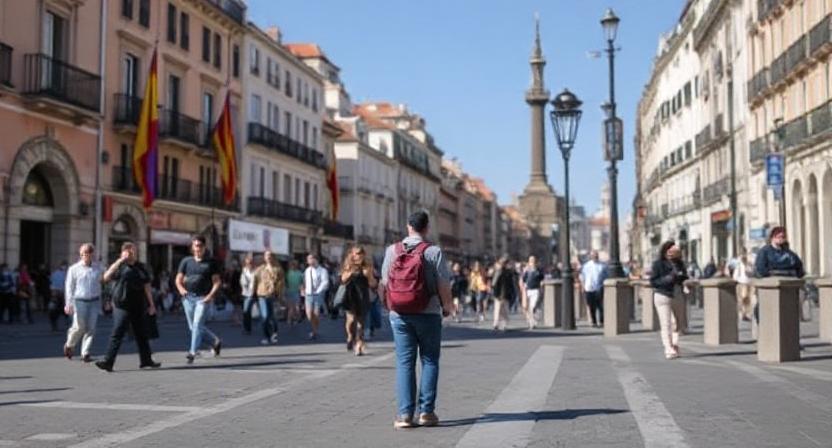Wednesday, August 6, 2025
Author: TTW News Desk
In a pioneering attempt to monitor tourism in one of Spain’s most historic and scenic attractions, the city of Girona has introduced a state-of-the-art tourist monitoring system in its world-famous Old Town. This part of the city’s overall tourism strategy is designed to offer data-driven analysis of the number of tourists, with special focus on the UK market, and their flows around major locations, including the famous Barri Vell.
Tracking Tourism with Mobile Signals
The newly deployed system uses nine high-tech detectors placed at strategic points throughout Girona’s Old Town. These devices work by capturing mobile phone signals from visitors walking around the area, enabling the authorities to distinguish between locals and tourists. The system also offers detailed information on whether a visitor is staying overnight or is simply passing through for a few hours.
The system relies on anonymized data collected from mobile signals, making it both an efficient and non-invasive way to gauge the volume of tourists. It also helps authorities track the most popular routes taken by visitors, providing valuable insights into which parts of the city receive the most foot traffic. This allows for a better understanding of the spatial distribution of tourists, enabling local authorities to prioritize infrastructure and services accordingly.
Improving Sustainability and Tourism Management
Girona, known for its medieval charm and as a Game of Thrones filming location, attracts a significant number of international visitors every year. However, like many popular destinations, Girona faces challenges related to over-tourism, particularly during peak seasons. The new tracking system is designed to address these challenges by helping local authorities better manage visitor flows and reduce the strain on the city’s historical sites and infrastructure.
The system will allow officials to monitor how many visitors are in the Old Town at any given time, helping to prevent overcrowding in sensitive areas. This information is also crucial for optimizing tourism-related services, such as transportation, security, and waste management, as well as identifying overcrowded locations that may need to be better regulated.
A Smarter Approach to Tourist Data Collection
One of the most important aspects of this initiative is the use of real-time data. Local authorities will be able to access up-to-date information about the number of tourists in specific parts of Girona’s Old Town, and whether they are likely to stay overnight or just visit for a few hours. This real-time insight will allow the city to respond more proactively to changes in tourist behavior and anticipate the demand for resources at any given moment.
This system is a key part of Girona’s strategy to become a more sustainable tourist destination. By gaining a better understanding of tourist flows and behaviors, the city can implement more effective policies and measures to manage tourism in a way that preserves the integrity of its historical and cultural heritage.
Balancing Growth with Preservation
Girona’s Old Town, a UNESCO World Heritage site, is home to many delicate and historically significant buildings, such as the Arab Baths and the Girona Cathedral, both of which attract thousands of visitors each year. The growing influx of tourists, particularly in the summer months, puts pressure on these sites, not just in terms of foot traffic but also in maintaining their preservation.
The goal of this tourist tracking initiative is to help balance the growth of tourism with the preservation of Girona’s unique cultural assets. By understanding where and when visitors congregate, the city can make data-driven decisions to optimize visitor experience while also protecting its architectural and environmental treasures.
Enhancing the Visitor Experience
In addition to managing tourism flow and preserving historical sites, this system is also expected to improve the overall visitor experience. With data on the most popular areas, local authorities can ensure that tourists are directed toward attractions that may not be as crowded, providing them with a more enjoyable and less stressful experience. Moreover, the data could be used to provide personalized recommendations for tourists, suggesting attractions, restaurants, and activities based on where they are staying and their preferences.
This initiative comes at a time when tourism sustainability is a hot topic in many European destinations, with local authorities recognizing the importance of using technology and data to improve the quality of tourism. Girona’s approach sets a precedent for other cities in the Mediterranean and beyond, showcasing how innovative technological solutions can help achieve sustainable tourism goals while still accommodating large numbers of visitors.
Future Implications for Tourism in Spain and Europe
The launch of a tourist counting system for Girona’s Old Town represents a move towards more intelligent, data-based tourism management in Spain. The system offers a model that is scalable and could in theory be followed by other leading Spanish tourist spots, including Barcelona and Madrid, in order to alleviate overcrowding and enhance the tourist experience as a whole.
In a wider context, Girona’s project could also serve as an inspiration for other initiatives throughout Europe. With so many of the continent’s most iconic cities already struggling with the impacts of over-tourism, Girona’s data-centric strategy could be replicated elsewhere, providing a means through which tourist flows can be monitored, resource distribution enhanced, and the long-term viability of such destinations secured.
